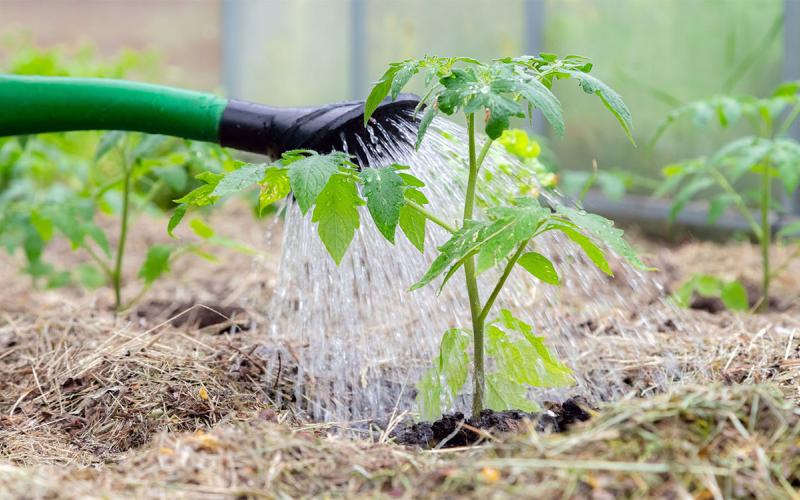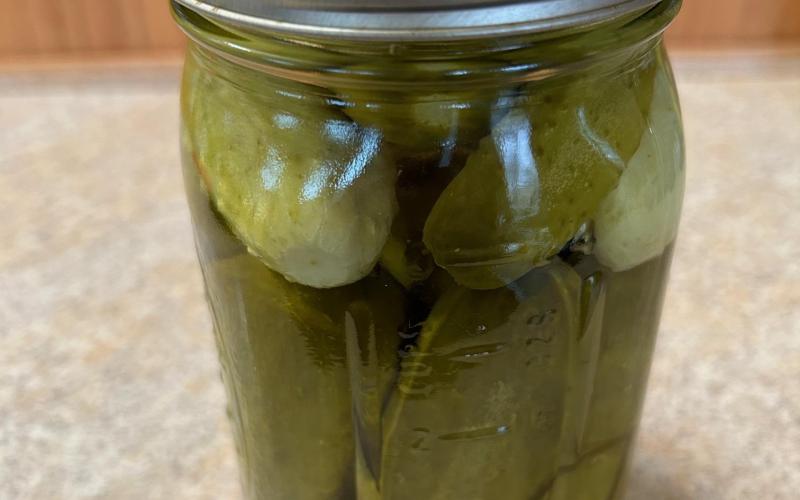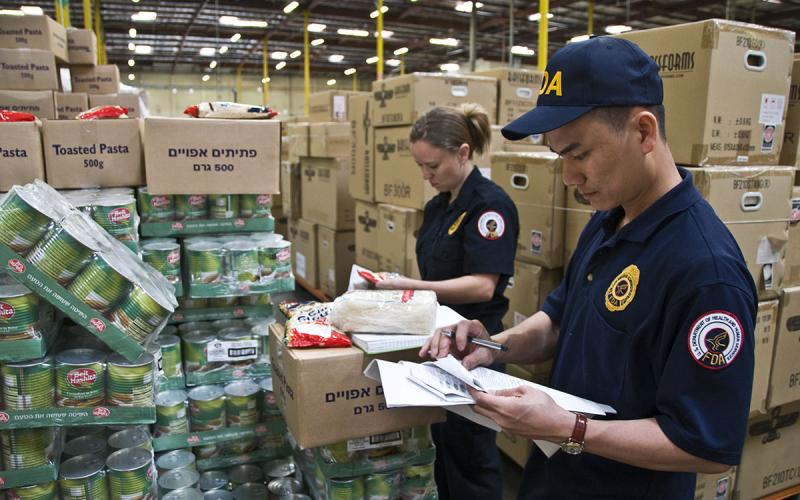Written by Lavonne Meyer (former SDSU Extension Food Safety Field Specialist).
Home canning tomatoes is a great way to preserve them for later use. It is critical to use proper methods of heat processing to ensure a safe finished product.
Recommended Methods
Boiling water or pressure canning are both accepted methods for canning tomatoes. Other methods such as oven canning and open-kettle canning can be hazardous and should not be used. All steps in preparing and cooking the foods need to be followed for the processing time as recommended by the USDA. For example, the processing time for tomato juice is significantly different than those recommended for crushed tomatoes or whole tomatoes. The times are based on the type of liquid used to pack or fill the jars of tomatoes. Tomatoes with no added liquid or packed in tomato juice have longer processing times because the heat distribution is less effective in juice than in water. Other factors that influence the time and temperature required for processing include the temperature of the product – hot pack or raw pack – and the size and shape of the jar.
Ensuring Acidity
For many years tomatoes were considered a high-acid food. However, new varieties have been developed with varying pH levels. pH is a measurement of acidity or alkalinity. Tomatoes from dead or frost-killed vines and over mature fruit may also have a pH level greater than 4.6. Tomatoes reach their highest acidity when they are still green and decrease in acidity until they reach their lowest acidity as they mature.
Because of the variables in pH levels in tomatoes, it is recommended to add acid to all water bath and pressure canned products to ensure a safe level of acidity. A pH of 4.6 or less will prevent the growth of Clostridium botulinum bacteria which causes botulism.
Adding Acid
Acid can be added in these forms:
- Citric acid: ½ teaspoon/quart or ¼ teaspoon/pint. Commercial brands are sold from companies like Mrs. Wages® and Ball®.
- Lemon juice: 2 tablespoon/quart or 1 tablespoon/pint. Use commercially bottled lemon juice to get a consistent product. Acidity levels vary in fresh lemons and there is also a chance of contaminating the juice from the rind.
- Vinegar (5% acidity): 4 tablespoon/quart or 2 tablespoons/pint. Adding vinegar will change the flavor of the tomatoes. This can be offset by adding some sugar to each jar.
Canning Process
Some recipes will give time recommendations for both the boiling water bath canner and the pressure canner. Acidification is necessary for either method. The pressure options only provide the same amount of heat to the product as the boiling water processes. Just because pressure is used to decrease the process time, the canning process is not the same as one to destroy spores of Clostridium botulinum as you would expect for low acid foods.
If you are using a pressure canner, the gauge should be checked every year. If it isn’t accurate within 2 pounds, the gauge should be replaced. If you are using a boiling water bath canner, preheat the water before processing. Preheat the water to 140° F for raw-packed foods and 180° F for hot packed foods. After jars have been boiled for the recommended time, take off the heat and remove the canner lid. Wait 5 minutes before removing the jars. This will help prevent liquids from siphoning out of the jars after a rapid change of temperature. Do not let the jars cool in the hot water as this could cause spoilage.
To learn more about canning tomatoes, watch our Common Questions About Canning Tomatoes video!
Other Considerations
Microorganisms that cause spoilage, such as molds, yeast and bacteria are destroyed by heat processing and these processing times are scientifically determined. Therefore, it is important to follow a tested recipe for tomatoes and tomato products such as salsa. Changing ingredients or method of preparation can influence the processing times needed to guarantee a safe product. If products are not prepared according to USDA recommendations, freeze them for long-term storage.
For specific information on processing times for tomatoes and tomato products, refer to the publication Canning and Freezing Tomatoes and Making Salsa.
References:
- Andress, Elizabeth L., Ph.D. "Sorting Out Tomato Canning Directions." National Center for Home Food Preservation. June 2010. Web. 30 May 2014.
- Burtness, Carol. "Add Acid to Tomatoes Before Processing." : Tomatoes and Salsa : Preserving and Preparing : Food Safety : Food : University of Minnesota Extension. 2012. Web. 30 May 2014.
- Driessen, Suzanne. "Canning Tomato and Tomato Products? Pay Attention to Directions." : Tomatoes and Salsa : Preserving and Preparing : Food Safety : Food : University of Minnesota Extension. Aug. 2012. Web. 30 May 2014.
- Raab, Carolyn A. "Canning Tomatoes and Tomato Products." Pacific Northwest Extension Publication, Jan. 2010. Web. 30 May 2014.
- Scott, Judy. "New Updates Available from Oregon State University on Canning Tomatoes Safely”, 2 Sept. 2010. Web. 30 May 2014.


